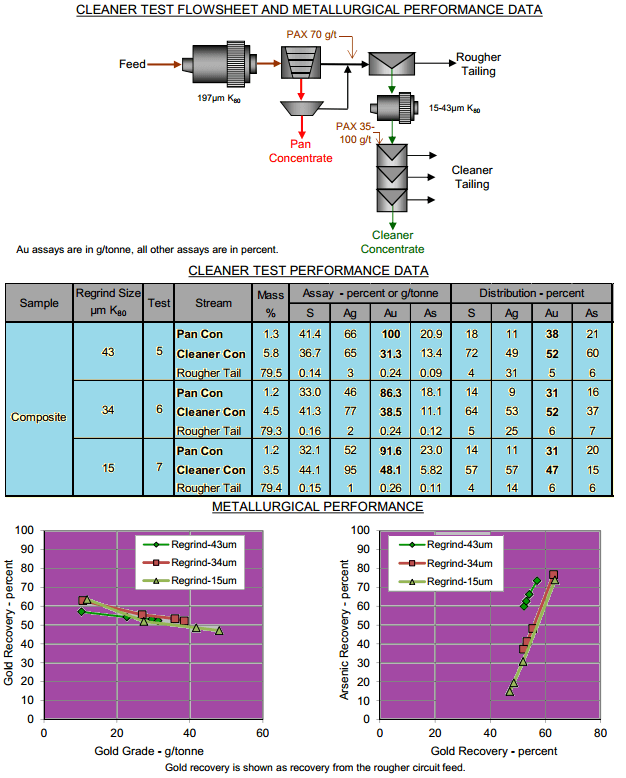Regrinding a flotation concentrate (commonly the rougher or scavenger conc) can often produce gains in final concentrate grades and overall metal recoveries. What is also possible and not unfrequent that all you get is a better concentrate grade. If the valuable metal (in this case Au) is locked with other easy to float sulfides and were going to to be recovered to final concentrate anyway, all you gain with a finer grain is better liberation for concentrate quality improvement.
Here is an example of a series of cleaner tests were conducted to evaluate regrind size. The composite was ground to a nominal P80 of 197µm and subjected to a gravity concentration followed by hand panning. The gravity tailings were subjected to a rougher test followed by regrinding the rougher concentrate to P80 between 15 and 43µm prior to three stages of dilution cleaning. Potassium Amyl Xanthate (PAX) was used as the collecting agent. Tests were conducted at a natural pH of approximately 8.6. A schematic of the test flowsheet, along with a summary of test results, are displayed here.
Gold from the feed was between 78 and 90 percent recovered into the pan and cleaner concentrates. On average, about 33 percent of the gold was recovered to the pan concentrate assaying, on average about 93 g/tonne gold. The remaining gold, recovered to the cleaner concentrate, assayed between 31 and 48 g/tonne gold. Silver recovery from the feed to the combined pan and cleaner concentrates was between 60 and 68%, with higher recovery seen at the finer regrind size. Greater gold losses were observed in the cleaner tails as the regrind size decreased. Arsenic removal improved significantly as the regrind size decreased indicating that a portion of the gold may be locked within arsenopyrite.
These gravity/cleaner tests were conducted at a primary grind size of 197 um to assess the effect of gold recovery at rougher concentrate regrind sizes of between 15 and 43um. Gold from the feed was between 78 and 90 percent recovered into the pan and cleaner concentrates. As the regrind size decreased, gold losses to the cleaner tails increased. Arsenic losses also increased indicating gold possibly locked with arsenopyrite.
